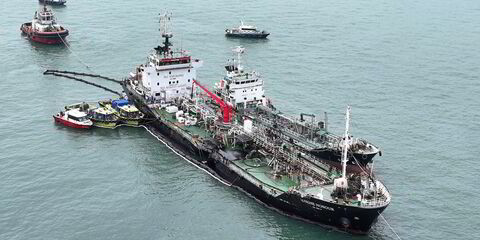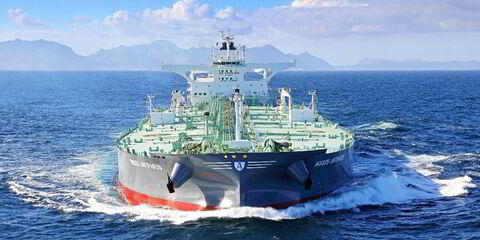Blamed, arrested, kidnapped, shot at, abandoned. The flag-waving on a special day about seafaring should not be used to hide the seedy underbelly that still makes this an unattractive profession for too many.
There are few British merchant navy officers and crew these days, but there are enough retired ones to fill my social media stream with tales of a halcyon past. Those writing on public forums have a more refined collection of memories than those recounting more explicit exploits in private groups.
The one thing they all say — and having been a seafarer I agree — is that life at sea today is not the same as it was in the past, and largely they are loathe to go back, no matter how much they miss it.
But today’s seafarer, whether Filipino, Chinese, Indian, Ukrainian or British, is still a unique stoic character.
Many readers will have seen the video circulating on social media of the drone attack on the 82,000-dwt Tutor (built 2022) in the Red Sea.
Can you imagine a life where you have armed guards in your own home and office?
Then there are the four seafarers killed by the Houthis, and those held captive in the past by Somali pirates.
Whether you are a former mariner, stuffed with memories of the Gulf wars and Vietnam, or a seafarer today running the gauntlet of Houthi attacks and piracy, one quickly responds to these challenges with a mentality of “new normal”.
An armed guard waving a high-powered rifle on the bridge while I navigate? No problem!
However, seafarers remain a nameless, faceless commodity warned by ship managers and crew agencies not to complain; they risk their careers and income if they do, and so dare not.
Meanwhile, the industry is full of platitudes for one day out of 365. “No seafarers, no ships, no shopping”, is a rallying call I have heard often enough to realise it falls on the deaf ears of those who should be listening.
The Day of the Seafarer is a time when most companies will have a polished social media post, a well-honed message, about how important and respected ship crews are, and perhaps present a carefully chosen seafarer to be a representative of the industry — maybe it’s the one or two women on their crew lists.
But crews are seen as a cost, a risk, a burden. Unmanned, autonomous shipping cannot come quickly enough.
Toughness over talent?
We also get told how managers want the best talent for tomorrow’s complex ships. Do they mean it? Or is what they want — or need — people who can endure the life they will be given?
The stories of those retired seafarers are full of fond memories of camaraderie and life on the ocean waves.
But what stories will today’s seafarers tell their grandchildren?
What stories will they recite about their treatment, about being imprisoned on their vessels for months on end because ports ban them from going ashore, a workplace with the risk of gunfire, knowing that when things go wrong, they could easily get the blame, be taken ashore and arrested?
One seafarer told me that although he has sailed with quality companies, risk assessments, permits, paperwork and procedures were regarded as tick-box exercises or were more geared towards protecting the company than the seafarer.
“Most companies still talk the talk; not all walk the walk,” he said.
Today’s seafarers have access to their own social media chat groups and have somewhat different stories from former generations, and they are different from what managers and agencies might expect.
Seafaring is, I believe, a character-building experience. I know — I did it — and I think it could still be if a bit more empathy were applied instead of the platitudes of those who live by a checklist.
We are told that shipping needs seafarers and recruitment is hard. It need not be.(Copyright)






